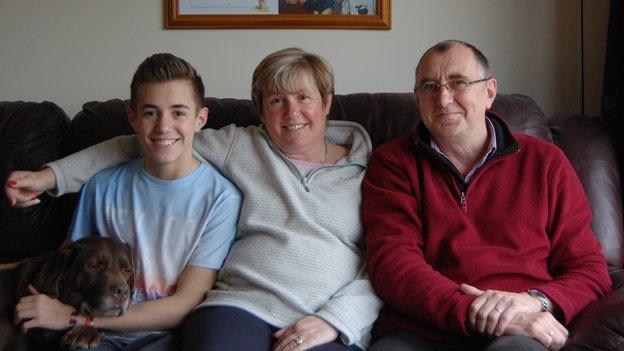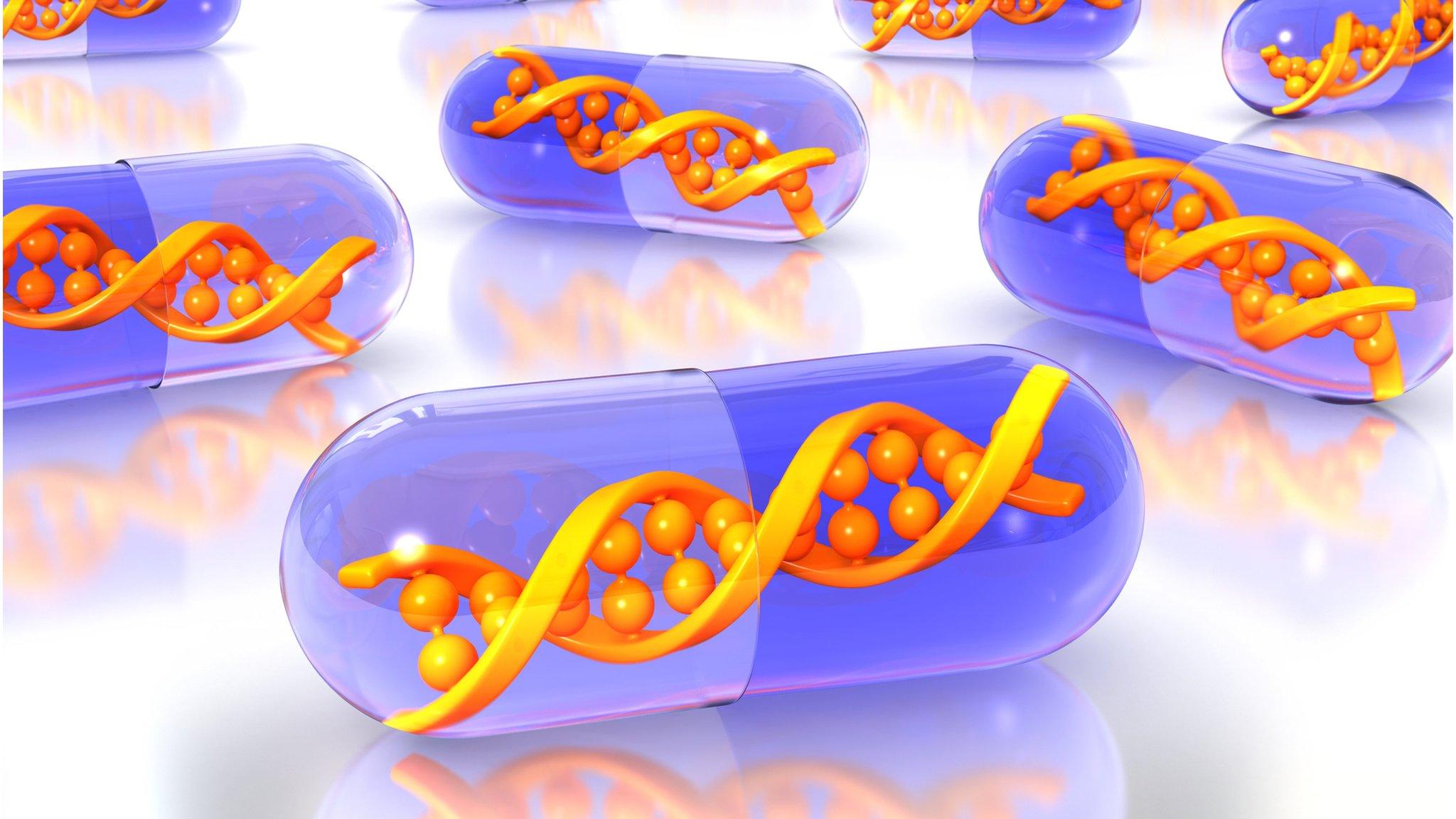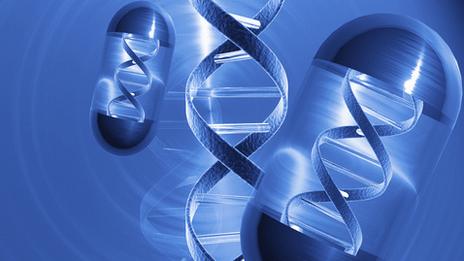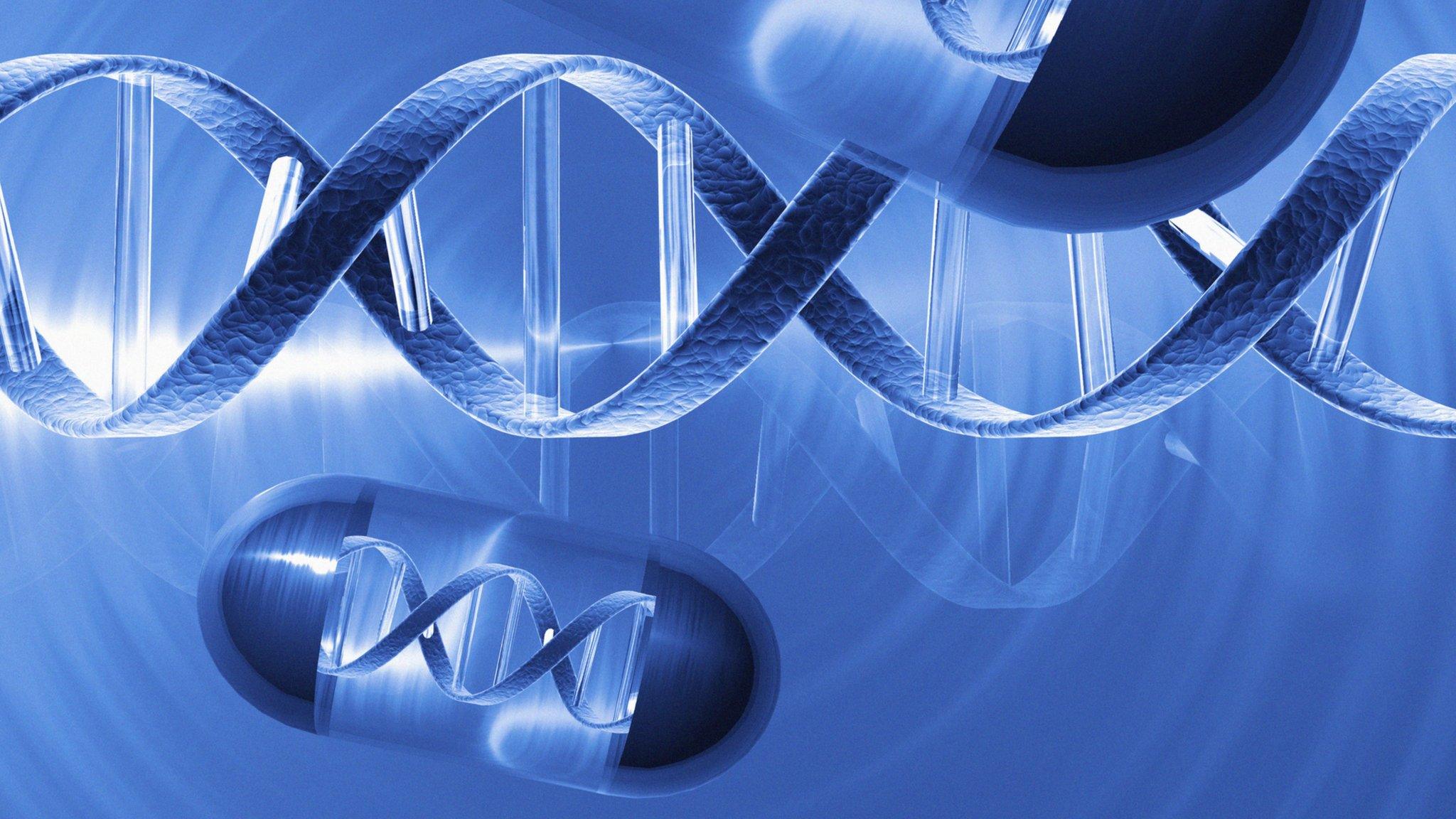Gene therapy: 'Tame HIV' used to cure disease
- Published

The lives of six boys with a deadly genetic disease have been transformed by a pioneering treatment to correct errors in their DNA, say doctors.
A defective immune system in Wiskott-Aldrich syndrome leaves people vulnerable to infections and bleeding.
A British and French study, published in JAMA, used tamed HIV to correct the defects.
One child who needed a wheelchair can now move freely, while symptoms have improved in the other patients.
The syndrome affects up to 10 children in every million born and almost exclusively affects boys.
Even tiny bumps and scrapes can lead to wounds that are slow to close in patients. Eczema is common, they face repeat infections including pneumonia as well as some cancers and autoimmune diseases.
It all stems from an error in the genetic code that contains the building instructions for a key element in the immune system - a protein called WAS.
Therapy
The main treatment is a bone marrow transplant - but that is an option only when the donor is a close tissue match, such as a sibling.
The trial at Great Ormond Street Hospital, in London, and Necker Children's Hospital, in France, removed part of the children's bone marrow.
It was purified in the laboratory to find the cells that regenerate the immune system and a tamed version of HIV was used to "infect" the cells with the correct DNA.
The corrected bone marrow cells were then put back into the children.
In six out of seven boys, the therapy was a success. It reversed symptoms and massively cut the number of nights spent in hospital. One French child with severe autoimmune disease no longer needs a wheelchair.
Another died from a drug-resistant herpes infection acquired before the therapy started.


Daniel Wheeler, who is now 15 and from Bristol, was the first British patient.
His older brother died from the same condition when he was two-and-a-half.
Their mum Sarah told the BBC News website: "Daniel was in and out of hospital, he had frequent infections of ear, chest, flare-ups and bruised joints, lots of operations.
"He was in education as much as we could, we didn't wrap him in cotton wool, but his sickness rate was very high.
"We were anxious. We never knew what would happen in the long-term, we still don't really but, touch wood, it has been a success."

Prof Adrian Thrasher, from Great Ormond Street Hospital, told the BBC News website: "I think it is very significant, it is another clear and powerful demonstration that a gene therapy approach is an effective one.
"And that we can begin to think of these, alongside conventional transplantation, as alternative options particularly where transplant is going to be complicated.
"What we hope, and the evidence is certainly suggestive of this, is that the therapeutic effect will last for a very substantial amount of time, such that the patients should not need another treatment and so therefore we hope that it will be lifelong."
Prof Ian Alexander from the Gene Therapy Research Unit at Sydney's Children's Medical Research Institute in Australia said although the work was promising, it was "still early days".
"The gene therapy field remains in its infancy, with the vast majority of its genuine promise yet to be realised."

Analysis
By James Gallagher, Health editor, BBC News website
The promise of gene therapy being able to cure a wide range of diseases has never been realised.
All medicine, even paracetamol, has risks and the early days of tinkering with the genetic code threw up huge dangers.
Several trials were abandoned as patients developed leukaemia when the modification turned healthy cells cancerous.
But those trials did show one thing - the underlying principle worked.
Safer methods, such as using modified HIV, have been developed in the past decade. There is now hope that some of the early optimism could soon be justified.
The first commercially available gene therapy was approved in 2012 for people who are unable to properly digest fats.
Gene therapy could be about to come in from the cold.

- Published2 November 2012

- Published11 December 2011

- Published11 July 2013

- Published17 March 2011